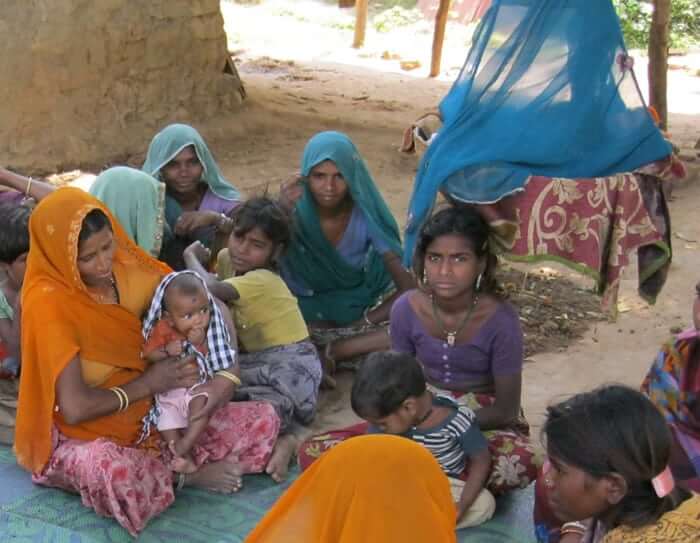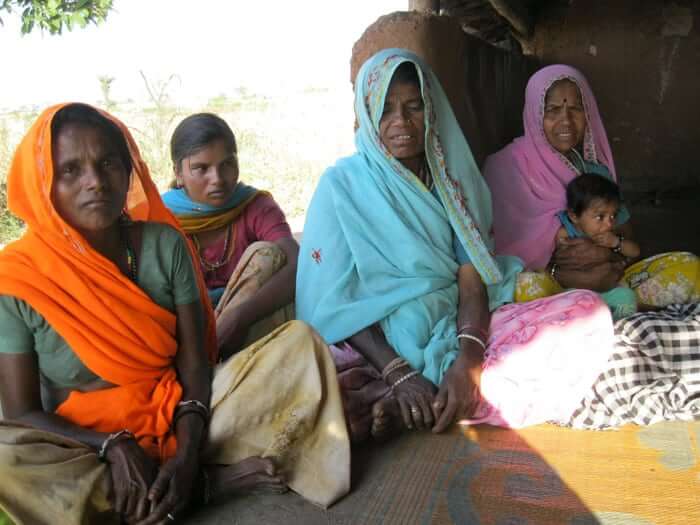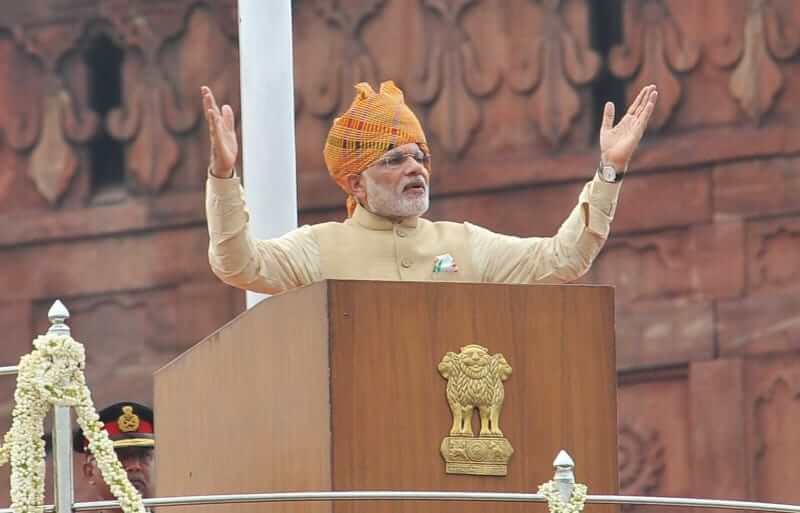Chittorgarh (Women’s Feature Service) – Kailashi Bhil, 30, is expecting her third child. During the initial stages of pregnancy she had suddenly developed a fever one evening and her family had no option but to rush her to the district hospital for treatment. The long and bumpy ride from her small hamlet of Chamanpura to Chittorgarh nearly 40 kilometres away did her more harm than good – exhausted from the journey, it had taken this severely anaemic woman several days to recover after she got back home. Seven months into her term, Kailashi is not only feeling stronger but, more importantly, she no longer has to worry about having to go all the way to the “big hospital” to get even the most basic medicines and tests or access antenatal care.
Chamanpura falls under Udpura Gram Panchayat that comprises 14 villages. With only one Accredited Social Health Activist (ASHA) and one General Nurse & Midwife (GNM) to service the entire area, often the already overworked health workers were unable to find time to get to this remote tribal hamlet in Rajasthan. Even going to the Udpura Health Sub Centre, around 30 kilometres away, did not guarantee a turn to meet the GNM in charge. Left to their own devices, the 16 families of Chamanpura had no alternative other than to spend precious money and a full day to go to the district hospital every time someone needed medical attention. For the expectant women this deprivation was no less than a curse considering their need for constant care and assistance.
It was the introduction of a special maternal health campaign by Prayas, a local non government organisation, and Oxfam India that changed the status quo in Chamanpura.

Till a year back, tribal women in the remote hamlet of Chamanpura in Chittorgarh district, Rajasthan, had no option but to go all the way to the district hospital to access even the most basic medical care as there is no anganwadi worker or ASHA in the village. (Credit: Annapurna Jha/WFS)
“Prayas, which is actively working with rural communities in southern Rajasthan, began implementing the maternal health intervention across 95 villages in Chittorgarh and Pratapgarh districts with Oxfam India’s technical guidance and financial support from DFID’s Global Poverty Action Fund (GPAF). The situation in Udpura panchayat was difficult because in seven out of the 14 villages, including Chamanpura, there was no anganwadi worker, ASHA or ANM to reach out to expectant women and new mothers. We, therefore, decided to work towards ensuring that the monthly Village Health and Nutrition Day, as mandated under the National Rural Health Mission, is observed on schedule. For the women of Chamanpura, a small settlement of less than 100 people, most of whom are illiterate and engaged in small-scale farming, this has brought about a tremendous positive change,” says Ritesh Laddha, senior programme coordinator of Prayas.
The Village Health and Nutrition Day (VHND) is a major health initiative aimed at improving women’s access to government sanctioned maternal, newborn, child health and nutrition (MNCHN) services. On a chosen day every month, the three frontline health workers, ASHA, ANM and anganwadi worker, converge at the anganwadi centre or any other suitable location in the village to do antenatal care check ups, routine immunisations, nutrition counselling, as well as distribute supplements and general medication if needed. “Before we began making concerted efforts towards pushing for regular VHND in every village people used to go to the Udpura Health Sub Centre. Since it was impossible for the one stationed GNM to attend to everyone many had to either go back without treatment or head to the district hospital, which was tiring and expensive considering the distance and non availability of public transport,” reveals Laddha.
Today, with support from Prayas, Chamanpura’s 10-member Village Health Sanitation and Nutrition Committee (VHSNC), which includes three women, marks every third Thursday of the month as the VHND. “Initially, despite the inherent benefits, getting women to take time out from their household chores and agricultural duties to avail of health services or sit through the counselling session was not easy. Whereas most were unwilling to give up important tasks like feeding the cattle or fetching water, some feared they would get ‘harmful’ injections if they showed up. Then there were those who said they didn’t know or had forgotten the date,” recalls Madhav Meghwal, an activist with Prayas.
To tackle these key challenges, Prayas decided to influence the community from within by picking some of its more conscientious members to be trained as barefoot auditors, or Animators (‘Utprerak’), to talk to the community about the various health schemes and help avail and monitor them as well. “A cadre of 135 barefoot auditors has been created in Chittorgarh and Pratapgarh districts and they are playing a crucial role in building awareness among locals about their health and nutrition rights. Not only are they tracking every pregnant woman in their village but are also making sure that she gets good care,” Laddha says. Though they get a nominal amount of Rs 300 a month, some are so committed that they go beyond their assigned duties, accompanying pregnant women for tests or delivery.
In Chamanpura, barefoot auditor Hazari Bhil, 27, took on the responsibility of ensuring that women and children duly show up on the VHND. While officially it’s the ASHA or ANM who has to mobilise the community, previous experience made it amply clear that reminders were necessary to get the message across. So, a day prior to the designated Thursday he would go door-to-door to tell each family of the upcoming VHND. “At times, Hazari Bhil and Sopal Kanwar, the anganwadi worker from the adjoining Chainpuriya village, who provides services in Chamanpura, too, worked together to motivate women to come to the mobile clinic set up outside Hazari Bhil’s home. Nowadays, they come on their own,” Meghwal says.
Women like Kailashi and Kankun are ready to leave everything aside on VHND to pick up their quota of iron and folic acid tablets or get children vaccinated. In fact, ask Kailashi about the maternal health services readily available on this day and she quickly rattles off, “All expectant women can get a tetanus shot as well as their blood pressure checked. Iron and folic acid tablets, which are good for our health, are handed out and we can give blood samples as well.” Kankun, 20, adds, “Last month, along with Kailashi, I had taken my tetanus shot and given a blood sample for testing my haemoglobin level. It’s such a relief to be able to get all this done in the village itself.”

These days, women in Chamanpura show up during the Village Health Nutrition Day held in their village to get vaccination shots, pick up their quota of iron and folic acid tablets and get their blood pressure and haemoglobin checked. (Credit: Annapurna JhaWFS)
Incidentally, there is one more person who is truly relieved that the VHND is a regular activity now – Udpura’s GNM, Zia ul Rahman. He says, “We have a severe shortage of healthcare personnel in this region and so the VHND helps in catering to a wider section of the population in a single go. I ensure that the mobile health teams are ready for action in the far-flung villages every month.”
Apart from the medication and vaccination, extensive counselling sessions have made a significant difference. In spite of suffering from malnutrition, pregnant women in this region have traditionally desisted from consuming foods that are rich in protein owing to the belief that it would get deposited on the foetus and result in complications during childbirth. “Through sustained discussions, Hazari Bhil, Sopal Kanwar and I have tried to clear misconceptions around this. It’s been a gradual learning curve and a few women like Kailashi have even started paying heed to our advice, which is heartening. Unlike earlier, they are trying to include milk, groundnuts and green vegetables in their diet,” says Meghwal.
Any change can be a slow process but when things improve it all seems worthwhile. “It’s been over a year now that all women in the area duly avail of services at the VHND and make it a point to go in for institutional delivery. The maternal health indicators are definitely looking up, which is extremely encouraging,” concludes Laddha.
(© Women’s Feature Service)




